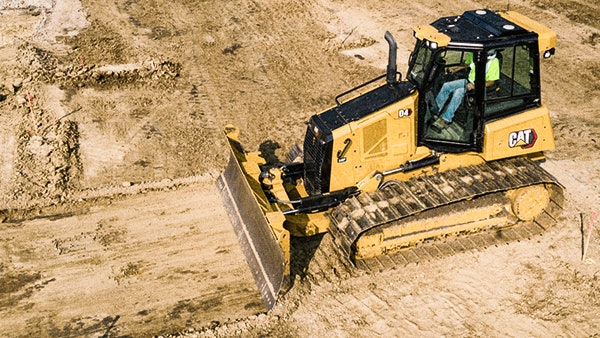5 Basic Questions About Grade Technology, Answered
In some situations, grade technology is your ticket into the bidding game — you can no longer respond to RFPs without it. Even if that’s not the case where you operate or for the type of work you do, it’s getting harder to ignore the advantages of having grade control onboard. The work gets done more accurately, productively, safely and profitably, despite the experience level of your operators.
Don’t let confusion about what’s available and how it works keep you on the sidelines. Here are some answers to a few basic questions about grade technology, so when you start the conversation with your equipment dealer, you can feel confident you’ve got a good grip on the fundamentals.
1. What exactly does grade technology do?
Some systems guide operators to grade visually, showing where to cut and fill and giving feedback along the way. Others control the blade or bucket for the operator automatically — eliminating or greatly reducing manual effort. Some systems can do both.
2. What’s the payback?
Lots of variables affect your return on investment: the system you choose, how well your operators use it, the application you work in and so on. Here’s what we can tell you: Studies show that Cat® Grade technologies can improve productivity by up to 50% and pay for themselves in about six months.
3. Do I need a 2D or a 3D system?
It depends on the type of work you do and how much you want to invest. 3D systems are more expensive and require added infrastructure, but they come with more capabilities and greater accuracy — ideal for complex tasks or when your job conditions and applications are constantly changing. 2D technology is simpler and less expensive, best when you’re working on flat planes and slopes and when job conditions and applications rarely change. It’s also easy to upgrade from 2D to 3D. (Check out this article for a more detailed look at the differences.)
4. What’s GNSS?
Some 3D grade technologies require a Global Navigation Satellite System (GNSS) receiver. Most of us use the term GPS when we’re talking about satellite navigation, but technically GPS only covers the U.S. system of satellites. GNSS covers the worldwide network, including the U.S., European Union, China and Russia.
5. What’s better: a factory-integrated system or a dealer-installed one?
Again, it depends. A factory-integrated system is built into your machine, which means it’s designed to work best with that particular piece of equipment and warranted like other components. But it’s not portable — meaning you can’t move the grade technology to another machine. A dealer-installed system can work just as well and give you more portability, but the trade-off may be less component protection since it’s installed outside the factory.
Now that you’re comfortable with the basics, it’s time to have a more in-depth conversation with your equipment dealer about what grade technology can do for you. Bring your requirements (budget, fleet make-up, site conditions, application issues, operator experience levels, etc.) to the discussion and let your dealer make a recommendation that fits your operation best.








Gloss